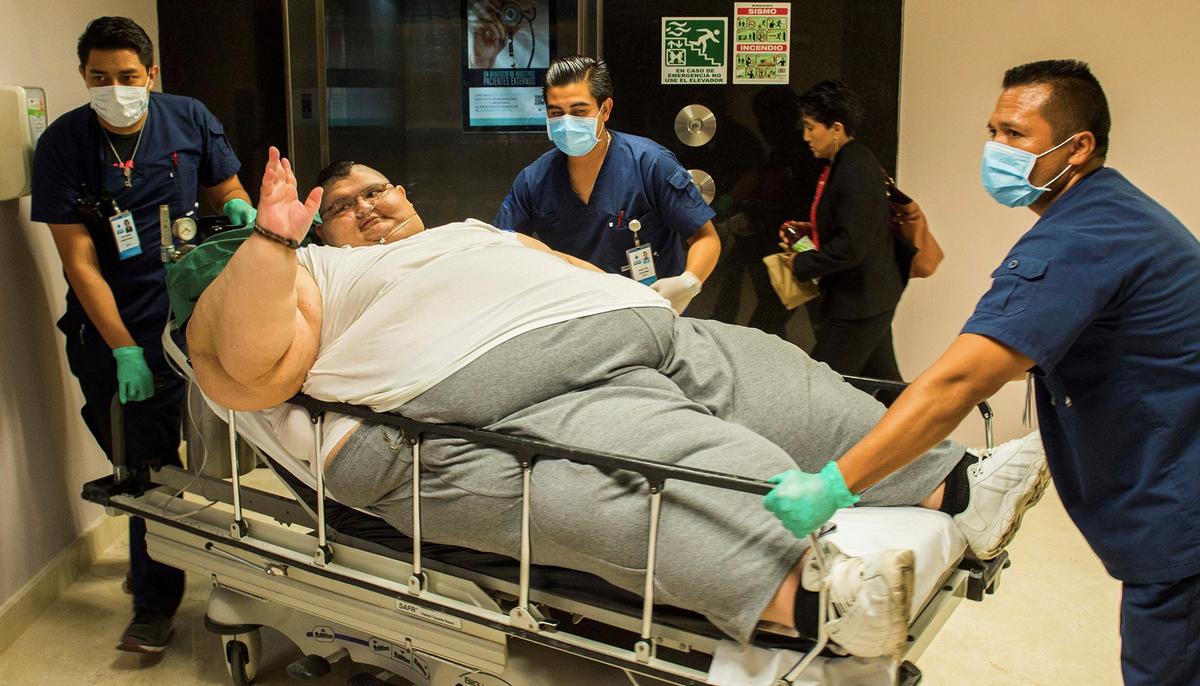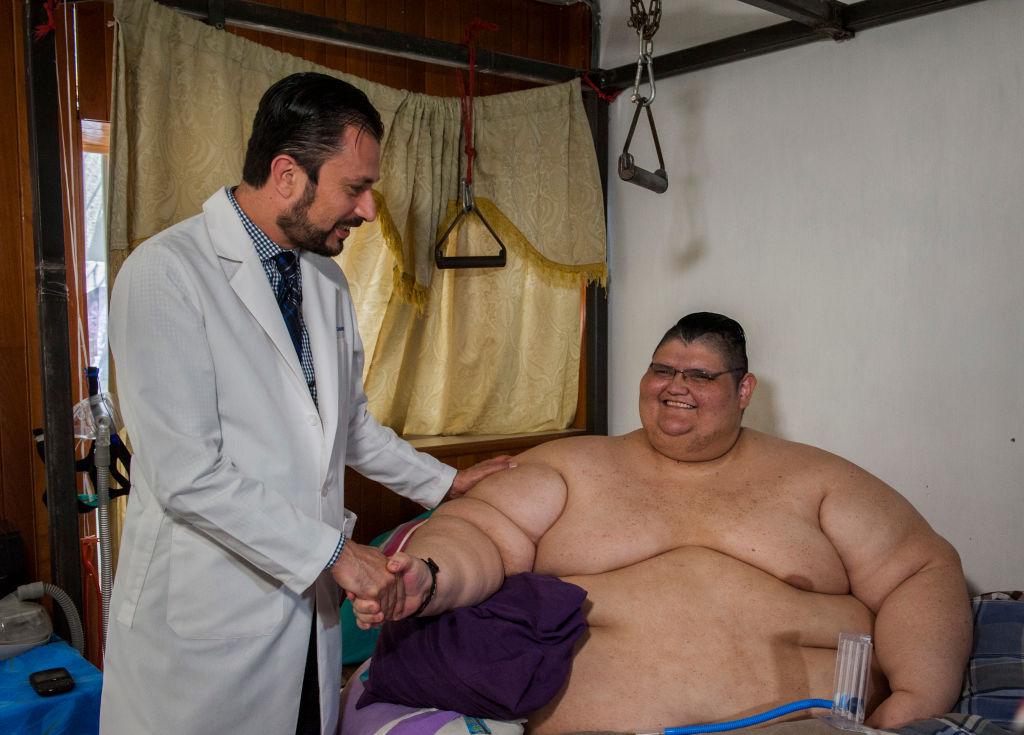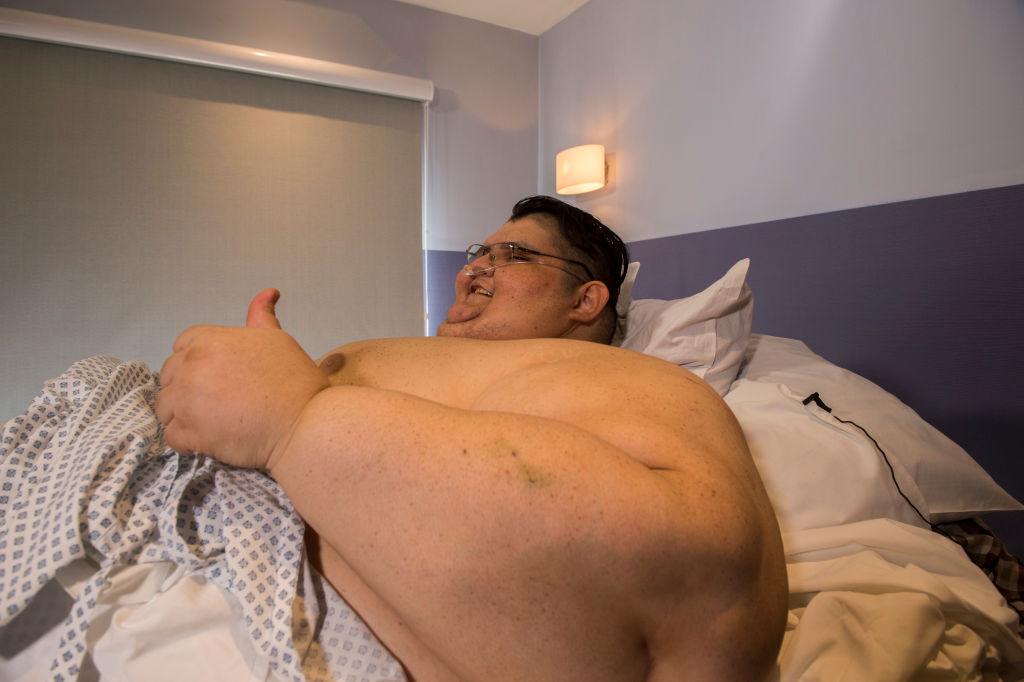From the archives: This story was last updated in December 2019.
Juan Pedro Franco, once the holder of the title of World’s Fattest Man, has battled to turn his life around over the course of three years. Today, the 35-year-old from Mexico has shed over half his body weight and doesn’t plan on stopping there.Best of all, Franco has been able to leave his bed and walk again. This milestone marks the first time that Franco has supported his weight on his own two feet, with the assistance of a cane, in almost a decade.

Weighing in at 1,302 pounds (approx. 591 kg) in 2017, Franco was bedridden, and his weight entailed an inevitable death sentence. Diabetic, hypertensive, and with serious lung damage, Franco was suffering in solitude.

Franco’s struggle hit international headlines in November 2016 when pictures circulated of the young man being transported to a clinic in Guadalajarain, 100 miles away from his home in the central Mexican city of Aguascalientes, for critical treatment.

After being hailed as the World’s Fattest Man by Guinness World Records in 2017, Franco, rather than take insult, used the loaded accolade as a wake-up call. His epic weight loss journey kicked into high gear with surgery, therapy, and a brand-new diet regime.
After undergoing three stomach-reduction operations, Franco was able to lose 60 percent of his body weight. The diabetes, hypertension, and lung damage he had been suffering due to his weight were finally stabilized.
The specialist surgeon who performed Franco’s gastric bypass surgeries, Jose Antonio Castaneda, has been credited for helping save the 35-year-old’s life.
As of November 2019, Franco is a shadow of his former self.
Weighing in at 574 pounds (approx. 260 kg), he is 728 pounds (approx. 330 kg) lighter than when he clenched the title of World’s Fattest Man. Photos show the accomplished guitarist walking with a cane and smiling broadly in the presence of supportive medical staff and family members.
The study’s authors projected that by the year 2050, the proportion of obese men and women in Mexico will rise to 54 percent and 37 percent respectively. More people, they say, will be “obese” than “overweight,” owing to increased consumption of calorie-dense foods and sedentary lifestyles.
Today, however, Juan Pedro Franco is breaking the mold. He is even looking to improve his life and mobility even further by planning for another operation, this time to remove excess skin on his body, which will make additional improvements to his quality of life.





Friends Read Free